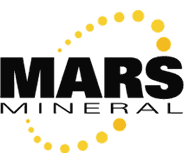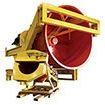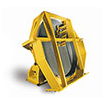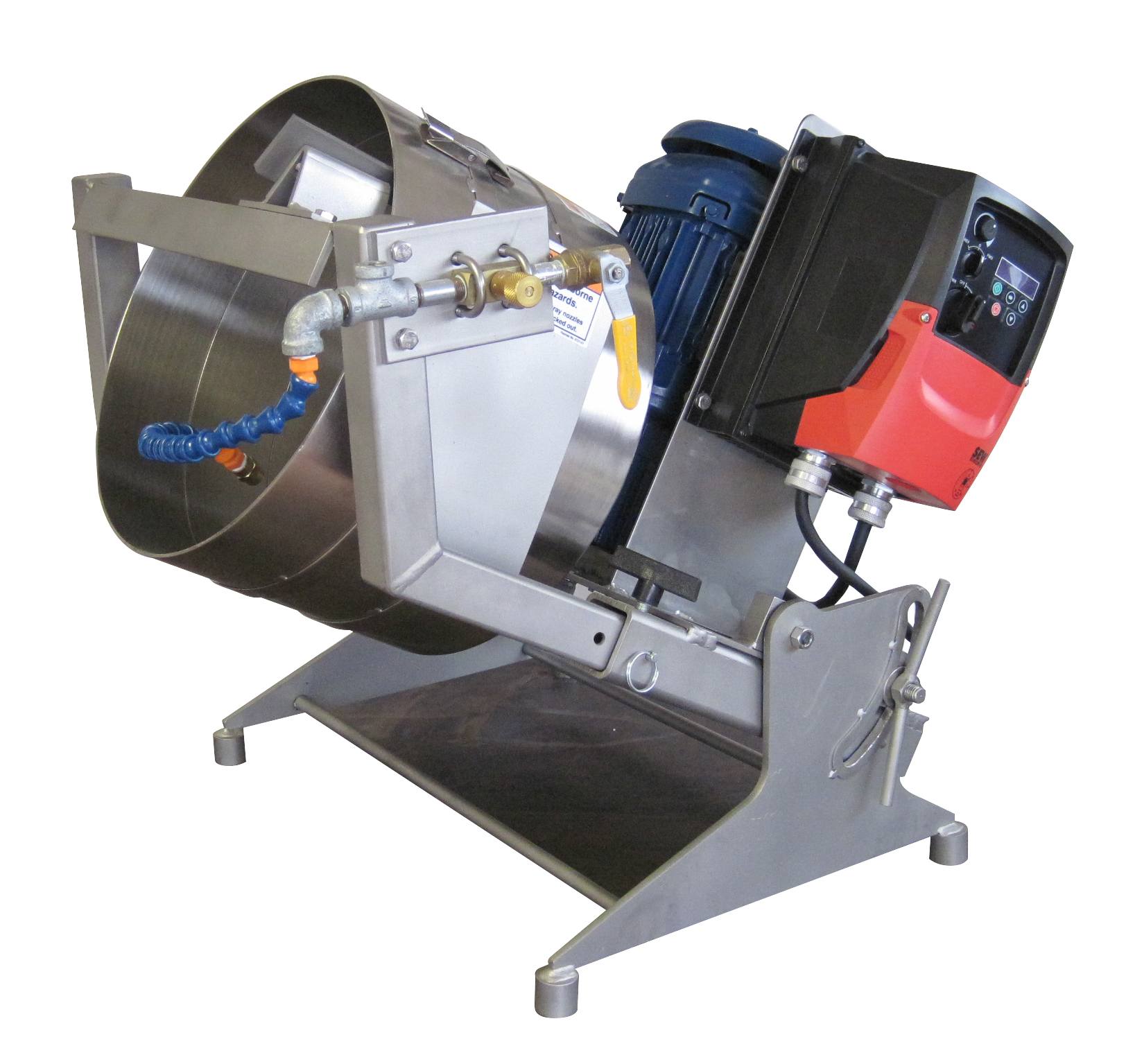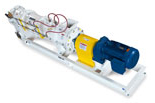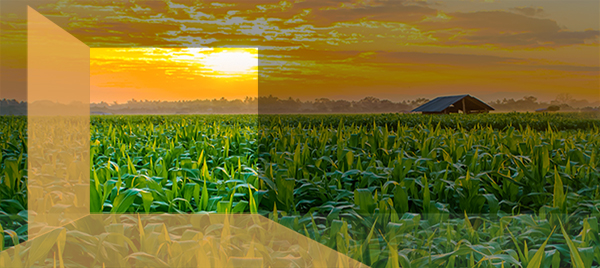
The Impact of FertilizerPelletization on PM2.5Reduction and Dust Control
by Bill Booher
In the agricultural and fertilizer industries, pelletization can help reduce PM2.5 emissions and transform the production and application methodologies of both inorganic fertilizers, such as potash, phosphate, and nitrogen, and organic types, including poultry manure and biochar. This is driven by factors including regulatory compliance, health concerns, and economic benefits like avoidance of material loss and subsequent monetary loss.
The fertilizer industry is apprehensive about the potential economic impacts and challenges in maintaining production and application levels while adhering to stricter air quality thresholds, even with a significant decline in PM2.5 emissions from the industry over the past two decades.
What is PM2.5?
PM2.5 refers to particulate matter less than 2.5 micrometers in diameter, consisting of acids, organic chemicals, metals, and dust, originating from sources like motor vehicles, industrial processes, and forest fires. Due to their small size, these particles can penetrate deep into the lungs and bloodstream, leading to serious health issues such as heart attacks and aggravated asthma. PM2.5 also impacts the environment, contributing to visibility-reducing haze and affecting ecosystems. Consequently, reducing emissions of PM2.5 and its precursors is a significant focus of environmental policies and health interventions globally.
Fertilizer dust can contribute to PM2.5 air quality issues. This happens when fine particles from dry fertilizers become airborne, especially under dry, windy conditions typical of many agricultural settings, and can contribute significantly to the ambient levels of PM2.5, which are monitored for air quality assessments.
PM2.5 emissions in the United States are regulated under the Environmental Protection Agency’s (EPA) National Ambient Air Quality Standards (NAAQS). According to recent updates, the EPA has tightened these regulations, lowering the acceptable level of annual PM2.5 (fine particulate matter) in the air from 12 micrograms per cubic meter to 9 micrograms per cubic meter as of February 7, 2024. The regulation mandates this new standard while keeping the other PM standards unchanged.
Thus, while the issue of PM2.5 emission standards is particularly pressing in the US due to recent changes by the EPA, it is also relevant in other parts of the world, including the EU, where strict environmental standards are common. The regulatory landscape in these areas could influence the practices and technologies adopted by industries, including those related to fertilizer production, to ensure compliance with air quality standards.
These changes underscore the urgency for the fertilizer and agricultural industries to adopt solutions like pelletization to contribute to better air quality standards and greater regulatory compliance worldwide.
Inorganic Fertilizers
US crops primarily use inorganic fertilizers like nitrogen, phosphate, and potash, applied as solids (powders) due to their efficiency and nutrient concentration.
Pelletization can significantly mitigate PM2.5 emissions in the inorganic fertilizer sector by converting fine, dust-like, mineral-based fertilizer particles into larger pellets, reducing airborne and windblown dust. The amount of dust generated can depend on factors like wind speed, surface conditions, and fertilizer type. Proper management practices can help minimize this impact.
Pelletizing not only aids in dust control but also improves fertilizer handling, storage, and application efficiency. Integrating this process with emission control technologies like dust collection systems can further reduce PM2.5 emissions.
EPA has tightened these regulations, lowering the acceptable level of annual PM2.5 (fine particulate matter) in the air from 12 micrograms per cubic meter to 9 micrograms per cubic meter as of February 7, 2024.
|
Organic Fertilizers
The agricultural industry can reduce PM2.5 levels by converting biomass into biochar through pyrolysis and processing chicken manure into pellet form for soil enhancement
Poultry Manure
Pelletizing poultry manure can play a role in reducing PM2.5 emissions, particularly by managing ammonia emissions more effectively. Ammonia, produced from the decomposition of uric acid in poultry manure, can contribute indirectly as a precursor to PM2.5 levels when it combines with pollutants from other sources. By pelletizing poultry manure, its storage and handling can become more efficient and controlled, potentially reducing the amount of ammonia released into the atmosphere compared to traditional manure management practices.
Biomass
Converting biomass into biochar through pyrolysis, a process of heating biomass in the absence of oxygen, offers an innovative approach to waste management and carbon sequestration. When this biochar is then processed into pellets, it significantly mitigates PM2.5 emissions. This is because pelletizing transforms loose, dust-like materials into compact, solid forms, reducing the amount of fine particles released into the air during handling and application. Thus, by pelletizing biochar produced from pyrolysis, the environmental benefits of biochar are utilized effectively, and the air quality is improved by minimizing the release of particulate matter.
Integrated Fertilizer Strategy
Achieving optimal agricultural outcomes requires a balance or blend between organic and inorganic fertilizers, enhancing soil health and nutrient concentration and allowing for slower release while mitigating environmental impacts. nutrient uptake, and overall better yield and crop quality. A balanced mix of organic and inorganic fertilizers could improve soil fertility and productivity sustainably while mitigating negative environmental impacts such as soil degradation and pollution.
A pin mixer helps in the integrated fertilizer production process by ensuring a homogeneous blend, aiding in pellet formation, and reducing dust, thereby facilitating the creation of a high-quality, nutrient-balanced fertilizer that leverages the benefits of both organic and inorganic components.
The benefits of pelletizing include eliminating fine dust particles and the improvement of material flowability and densifying. This results in reduced worker exposure to airborne dust, improved environmental conditions in the plant, the ability to recycle, reuse or produce a saleable product, or simply to provide a non-dusty product for disposal.
Key to Reducing PM2.5 Emissions and Enhancing Pellet Quality
The effectiveness of pelletizing in reducing PM2.5 emissions depends on several factors, including the pelletizer’s design, the material’s properties, and handling practices.
Biochar pellets can be a useful soil amendment for agriculture and home gardeners. Biochar pellets are made from fine-grained biochar that is compressed into small, easy-to-use pellets. They can be made from various feedstocks, such as wood chips, agricultural waste, and even sewage sludge.
Technologies vary from disc pelletizers, which roll materials into pellets, to drum pelletizers and pin mixers, each offering different benefits in terms of size control, throughput, and material compatibility. Proper material preparation, moisture content control, and post-pelletization handling are crucial for maximizing emission reduction and ensuring the quality and stability of the pellets.
Pilot-scale testing determines the technical feasibility of converting various materials into pellets that meet specific customer specifications. Through comprehensive testing, including sieve analysis, moisture balance, and pellet hardness, Mars Mineral helps clients understand the pelletization
process and ensures the production of quality pellets, guiding them from initial assessments to full-scale production.
In Conclusion
While pelletizing can help mitigate PM2.5 emissions in the fertilizer and agricultural industries, it should be part of a comprehensive approach that includes proper material handling, application techniques, and adopting best practices and technologies for emission reduction.

